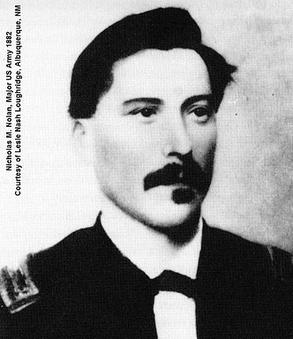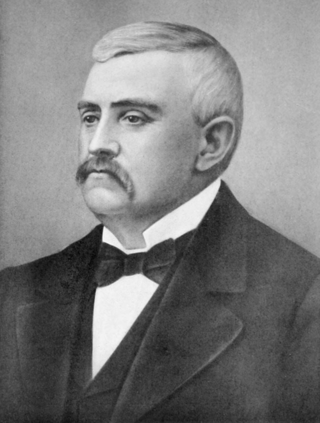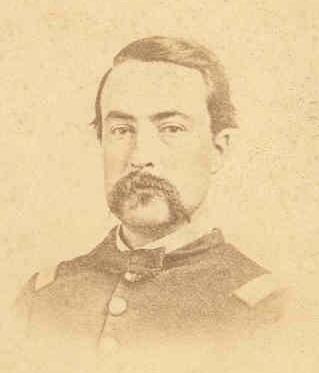
Hugh Judson Kilpatrick was an officer in the Union Army during the American Civil War, achieving the rank of brevet major general. He was later the United States Minister to Chile and an unsuccessful candidate for the U.S. House of Representatives.

Henry Harnden was an American sailor, Republican politician, and Wisconsin pioneer. He served as a Union Army officer during the American Civil War and led the Wisconsin cavalry regiment which was credited in the capture of Confederate president Jefferson Davis. After the war, he was granted an honorary brevet to brigadier general. He also went on to serve one term in the Wisconsin State Assembly, representing eastern Jefferson County.

John Irvin Gregg was a career U.S. Army officer. He fought in the Mexican–American War and during the American Civil War as a colonel and near the end of the war as a brevet general in the Union army. In 1866, he was nominated and confirmed as a brevet major general of volunteers and a brevet brigadier general in the Regular Army, both to rank from March 13, 1865.
The 4th Wisconsin Infantry Regiment was an infantry regiment that served in the Union Army during the American Civil War, primarily in the Western Theater. It was later mounted and became the 4th Wisconsin Cavalry Regiment.

The 6th Wisconsin Infantry Regiment was an infantry regiment that served in the Union Army during the American Civil War. It spent most of the war as a part of the famous Iron Brigade in the Army of the Potomac.
The 36th Iowa Infantry Regiment was an infantry regiment that served in the Union Army during the American Civil War.

Samuel Johnson Crawford was a Union Army officer during the American Civil War, and the third Governor of Kansas (1865–1868). He also served as one of the first members of the Kansas Legislature.

William Henry Forwood was a surgeon from Brandywine Hundred, Delaware, who served in the Union Army during the American Civil War and eventually as Surgeon General of the United States Army from June 8, 1902 until September 7, 1902.

The 13th Maine Infantry Regiment was an infantry regiment that served in the Union Army during the American Civil War. The regiment spent 1862–1864 in the Department of the Gulf and finished the war with the Army of the Shenandoah. During its service, it survived a hurricane off the Carolinas en route the Gulf of Mexico, manned the forts guarding the Mississippi Delta, invaded Texas at the Rio Grande and along the coast, fought in Banks' ill-fated Red River Campaign in Louisiana, manned Washington, D.C., defenses, and provided rear-area security for the Shenandoah Valley campaign in 1864 south of Harpers Ferry.

Louis Henry Carpenter was a United States Army brigadier general and a recipient of the Medal of Honor for his actions in the American Indian Wars.

Nicholas Merritt Nolan was a United States Army major. An Irish immigrant, he began his military career in New York on December 9, 1852, with the 4th Artillery, and subsequently served in New York's 2nd Dragoons. He enlisted as a private and rose through the ranks becoming a first sergeant. He was commissioned an officer in late 1862 in the Regular Army, while serving with the 6th U.S. Cavalry Regiment during the American Civil War. He participated in 16 campaigns with the 6th and most of its battles. He was slightly wounded at the Battle of Fairfield and seriously wounded at the Battle of Dinwiddie Court House. He was brevetted twice and noted at least twice for gallantry during combat. He was slightly wounded when captured at the end of March 1865, and was later paroled. After the Civil War, he served with the 10th U.S. Cavalry, known as the Buffalo Soldiers, for 14 years. Nolan is also noted for his pluses and minuses during the Buffalo Soldier tragedy of 1877 that made headlines in the Eastern United States. He was the commanding officer of Henry O. Flipper in 1878, the first African American to graduate from the United States Military Academy at West Point. He commanded several frontier forts before his untimely death in 1883.
The 2nd Maine Cavalry Regiment was a cavalry regiment that served in the Union Army during the American Civil War.

Lyman Munson Ward was an American farmer, Republican politician, and Union Army colonel in the American Civil War. He served four years in the Michigan House of Representatives, and received an honorary brevet to brigadier general after his service in the war.

Ira Wallace Claflin was a United States Army West Point regular officer who took command of the 6th US Cavalry during the critical days of July 1863 during the Gettysburg Campaign. He was an instructor of Union cavalry tactics for West Virginia and later taught at West Point.

George Alexander Hamilton Blake was a cavalry officer in the United States Army during the American Indian Wars, the Mexican–American War and the American Civil War.

The Sinking Creek Raid took place in Greenbrier County, Virginia during the American Civil War. On November 26, 1862, an entire Confederate army camp was captured by 22 men from a Union cavalry during a winter snow storm. The 22 men were the advance guard for the 2nd Loyal Virginia Volunteer Cavalry, which was several miles behind. This cavalry unit was renamed 2nd West Virginia Volunteer Cavalry in 1863, after West Virginia became a state.

The 122nd Regiment Illinois Volunteer Infantry was an Infantry Regiment that served in the Union Army during the American Civil War.

James Monroe Williams was an American lawyer, soldier, and merchant. He served both as a cavalry and as an infantry officer in the Union Army within the Trans-Mississippi Theater during the American Civil War, and was breveted a brigadier general near the end of the conflict.

The Battle of Ponchatoula was a battle in Ponchatoula, Louisiana, and Ponchatoula Creek at the onset of the Vicksburg Campaign during the American Civil War. Fought from March 24 to March 26, 1863, the battle was part of an offensive campaign waged by the Union's 6th Michigan, 9th Connecticut, 14th Maine, 24th Maine, 165th New York Zouaves, and 77th New York infantry against Confederate troops to capture Ponchatoula for the Union and destroy the town's railroad bridge. This was ultimately a failure by the Union, as the outcome of the battle led to the Confederates regaining control of Ponchatoula.

Oliver Paul Gooding was an officer in the Union Army during the American Civil War and was brevetted Major General for his war service. He graduated from the United States Military Academy in 1858 and served in the Utah expedition. After the Civil War broke out he was named colonel of an infantry regiment and accompanied the New Orleans expedition in 1862. He led an infantry brigade at Fort Bisland and Port Hudson in 1863. He led a cavalry brigade in the Red River campaign in 1864. After the war he practiced law and wrote two religious books.


















